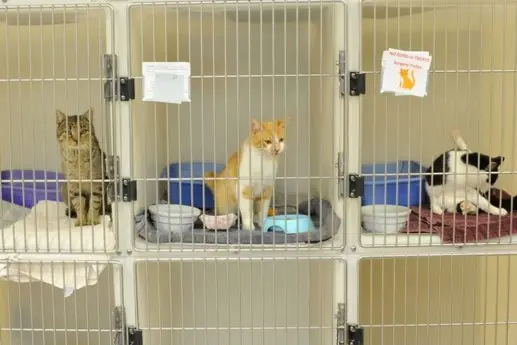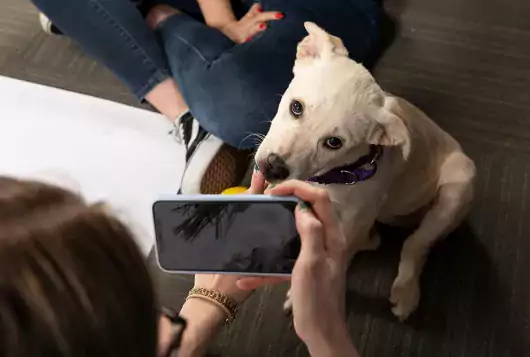Setting Up and Preparing for Offsite Cat Adoptions

This is Part 3 of 4 in a series
Your staff or volunteers—or your partner’s staff—can be responsible for daily cat care and adoptions. Regardless of who is in charge of these tasks, make sure they are trained on proper protocol.
The Bucks County SPCA in Pennsylvania runs numerous successful offsite cat adoption locations and holds special volunteer training sessions for offsite cat volunteers: one for daily caregivers and one for adoption counselors (you must be a cat caregiver before advancing to adoption counselor).
Volunteer training consists of classroom instruction, an online exam and a one-on-one in-person tutorial, totaling approximately five hours of training prior to being assigned a shift.
Other Volunteer Considerations
- Check with your insurance provider to determine what age volunteers must be to participate
- Require that all offsite volunteers wear clothing with your logo and dress and act appropriately as a representative of your agency
- Ask volunteers to commit to a minimum number of shifts/hours per month—you are investing a lot of time in their training (Bucks County requires a commitment of two 2-hour shifts per month)
- Send a weekly email to all volunteers sharing who was adopted (and who served as the adoption counselor for each adoption), open shifts, cat behavior and health information, volunteer profiles, etc.
Supplies
According to Linda Reider, executive director of Bucks County SPCA, each of the agency’s offsite adoption locations houses multiple cats and costs approximately $200 to set up. Reider recommends buying needed supplies from the partner agency if possible. Supply costs can be substantially less if items are donated.
Reider suggests having the following on hand at each location:
- Collars
- Blankets
- Toys
- Scratching pads/posts
- Large cages for pairs or litters
- Wipes
- Scale
- Bowls
- Brushes
- Signage (noting fees and adoption process, “cage clean” and “on hold/adoption pending” signs)
- Cleaning supplies
- Credit card machine or mobile credit card processor for phone
- Hand sanitizer
- Cash box
- Cart to hold all the supplies
- Volunteer badges
- Volunteer bulletin board
- Towels
Cats
Choosing, vetting and caring for offsite cats is critical for a successful program.
Choosing Cats: Select healthy, social cats for offsite locations. If the location will house multiple cats, offer a variety of ages, colors and both genders. Cats who have urine/litterbox issues are not suitable for offsite locations since they may make it difficult to keep the area clean.
Vetting Cats: All cats going to offsite locations should be fully vetted, which includes spayed or neutered. Be sure that all their medical paperwork is organized and onsite with the cat so it can be transferred directly to the adopter.
Daily Cat Care: All caregivers should be trained and tested on the daily cat care protocol. Bucks County uses a PowerPoint presentation to teach daily care to new volunteers.
Sick Cat Protocol: Consult with your veterinarian about your agency’s sick cat protocol. Bucks County pulls cats from offsite locations for urgent medical cases, like blood in the urine or green mucous in the eyes or nose.
On average, Bucks County places offsite cats in seven days. However, if a cat is not adopted within 21 days, the cat is either returned to the shelter or moved to another offsite location and marketing efforts are increased (new photo and/or new write-up) to give him or her a better chance of finding a home.
More
We have lots more on this subject:




